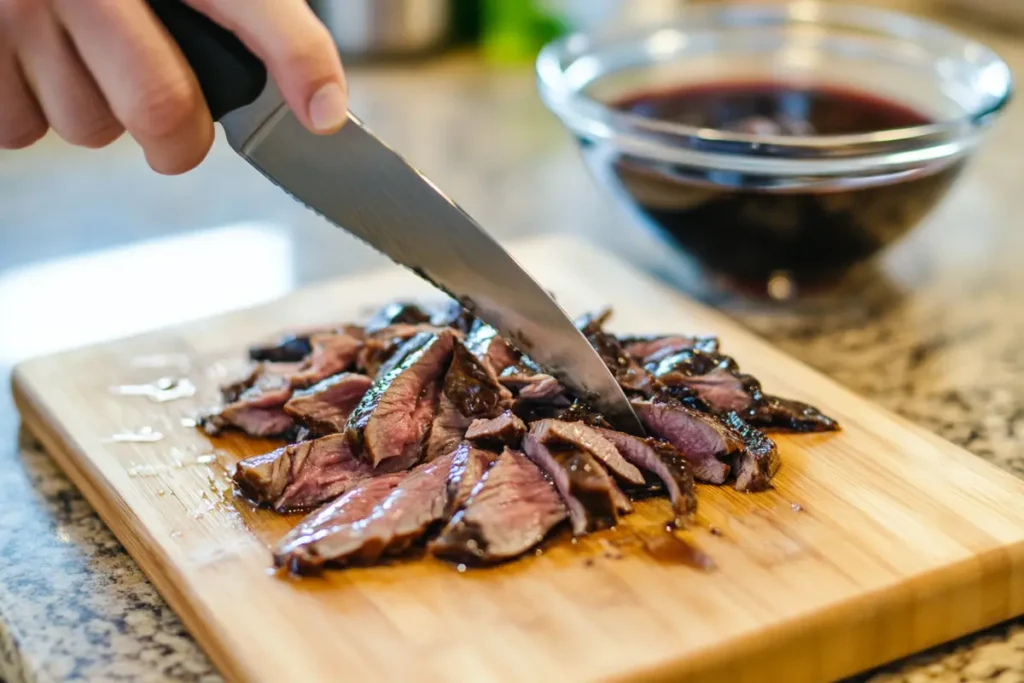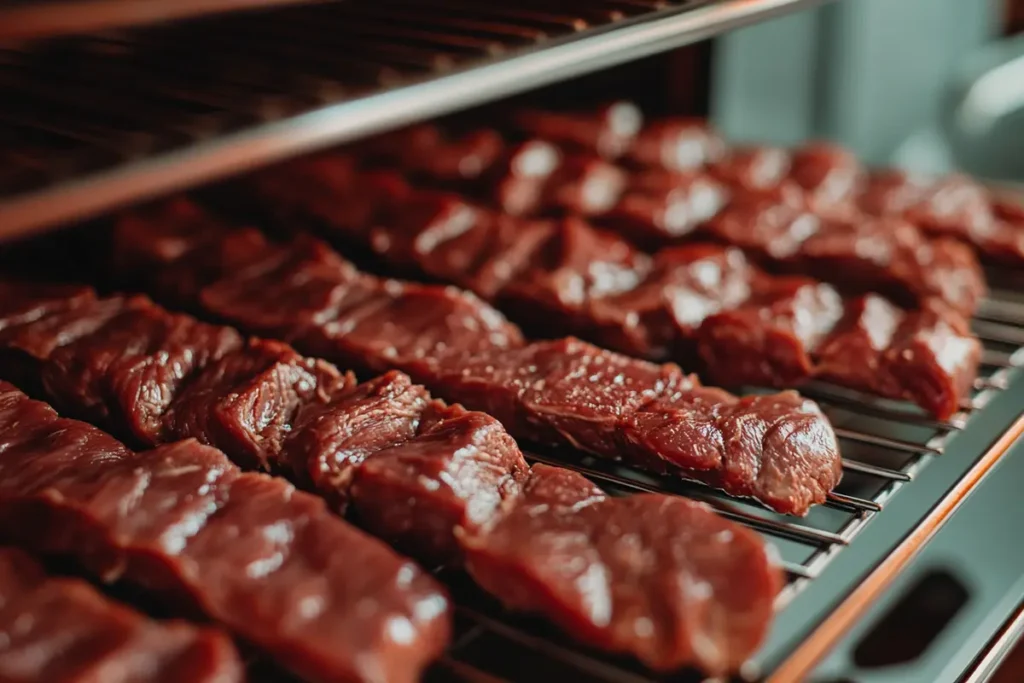Making venison jerky is a timeless tradition that combines the rich, earthy flavors of wild game with a convenient and delicious snack. However, one critical question that often arises is: “Does venison need to be frozen before making jerky?” This is not just a matter of preference; it involves important considerations for food safety, texture, and flavor. In this article, we’ll dive deep into this question, explore the science behind freezing venison, and provide a step-by-step guide to making the perfect jerky.
Understanding Venison Jerky Preparation
Jerky has been a favorite snack for centuries, prized for its long shelf life and portability. Venison, or deer meat, is a popular choice for jerky due to its lean composition and robust flavor. But before diving into the jerky-making process, it’s crucial to understand the role freezing may play in the safety and quality of your final product.
Does Venison Need to Be Frozen Before Making Jerky?
The Importance of Freezing Venison
Freezing venison before making jerky is often recommended for safety reasons. Venison is a wild game meat, and wild game may carry parasites, such as Trichinella, which can cause trichinosis, or Toxoplasma gondii, which can cause toxoplasmosis. Both parasites can survive in raw meat if it’s not handled or cooked properly.
Freezing venison at temperatures below -4°F (-20°C) for at least 30 days can effectively kill parasites that might be present in the meat. This step ensures that your jerky is safe to eat, even if it’s not cooked to a high internal temperature during the dehydration process.
When Freezing Venison is Essential
- Wild-Harvested Game
If your venison comes from a wild deer, freezing is highly recommended to eliminate potential parasites. Wild animals are more likely to be exposed to these pathogens compared to farm-raised deer. - Long-Term Storage
Freezing venison before making jerky can also help preserve its freshness. If you’re not planning to process the meat immediately, freezing prevents spoilage and maintains the meat’s quality. - Ease of Slicing
Slightly frozen meat is firmer and easier to slice into thin, even strips, which are ideal for jerky. This can save time and effort while ensuring consistent results.
When Freezing Might Not Be Necessary
While freezing venison is often recommended, there are scenarios where it might not be strictly necessary:
- Freshly Harvested and Processed Meat
If the venison is harvested, processed, and immediately prepared for jerky, and you’re confident in its cleanliness and parasite-free status, freezing may be skipped. However, this approach carries a level of risk if proper precautions are not taken. - Commercially Sourced Venison
Venison purchased from reputable commercial sources is often pre-tested or raised in controlled environments, reducing the likelihood of parasites.
How Freezing Impacts the Quality of Jerky
Texture
Freezing venison can slightly alter the meat’s texture, making it softer and potentially easier to chew. However, overfreezing or freezing for extended periods may lead to freezer burn, which negatively affects the flavor and texture.
Flavor
Freezing locks in freshness, preventing the meat from developing off-flavors. This is especially important if the meat won’t be processed into jerky immediately.
Moisture Retention
Proper freezing techniques help retain the meat’s moisture, which is crucial for achieving a balanced jerky texture. Dehydrating overly dry or freezer-burned meat can result in jerky that’s tough and brittle.
Step-by-Step Guide to Freezing Venison Before Making Jerky

- Trim the Meat
Remove any fat, sinew, or connective tissue from the venison. Fat doesn’t dry well and can lead to rancidity, affecting the shelf life of your jerky. - Portion and Pack
Divide the venison into smaller portions to make freezing and thawing easier. Vacuum-seal the portions or use freezer-safe bags to prevent freezer burn. - Label and Freeze
Label each package with the date and freeze at a temperature below -4°F (-20°C). Ensure that the freezer maintains a consistent temperature to effectively kill parasites. - Thaw Properly
When ready to make jerky, thaw the venison in the refrigerator to prevent bacterial growth. Never thaw meat at room temperature, as this can encourage contamination.
Making Jerky Without Freezing Venison
If you choose not to freeze your venison before making jerky, follow these precautions to minimize risks:
- Cook to a Safe Temperature
Heat the meat to an internal temperature of 160°F (71°C) before dehydrating. This step kills any bacteria or parasites that might be present. - Practice Proper Hygiene
Wash your hands, utensils, and surfaces thoroughly to prevent cross-contamination. - Use a Food-Safe Marinade
Marinades containing acidic ingredients like vinegar or citrus juice can help inhibit bacterial growth.
Marinating Venison for Jerky
A good marinade not only enhances the flavor of venison jerky but also contributes to food safety. Here’s a simple marinade recipe:
Ingredients
- 1 cup soy sauce
- 1/2 cup Worcestershire sauce
- 2 tbsp liquid smoke
- 2 tbsp brown sugar
- 1 tsp garlic powder
- 1 tsp onion powder
- 1 tsp black pepper
- 1/2 tsp red pepper flakes (optional)
Instructions
- Combine all ingredients in a large bowl.
- Add venison strips and ensure they are fully submerged.
- Cover and refrigerate for 12-24 hours to allow flavors to penetrate.
Dehydrating Venison Jerky

Once marinated, the venison is ready for dehydration. Here’s how:
- Preheat the Oven or Dehydrator
Set your dehydrator to 160°F (71°C) or use your oven at the lowest setting. - Arrange the Strips
Lay the venison strips in a single layer on the racks, ensuring they don’t overlap. - Dehydrate
Allow the meat to dry for 4-6 hours, checking for doneness periodically. Properly dried jerky should be firm and slightly pliable, not brittle. - Store Properly
Once cooled, store your venison jerky in an airtight container or vacuum-sealed bag. Refrigerate or freeze for long-term storage.
FAQs About Freezing Venison for Jerky
1. How long should venison be frozen to kill parasites?
Venison should be frozen at or below -4°F (-20°C) for at least 30 days to effectively kill parasites.
2. Can I skip freezing if I cook the jerky to a high temperature?
Yes, cooking the meat to an internal temperature of 160°F (71°C) before dehydrating eliminates the need to freeze.
3. Does freezing affect the flavor of venison jerky?
Freezing preserves the freshness of the meat, enhancing the overall flavor. However, improper freezing techniques can lead to freezer burn, which affects taste.
4. What are the risks of not freezing venison before making jerky?
Skipping the freezing step may increase the risk of parasite contamination if the venison is not cooked to a safe internal temperature.
5. Is frozen venison harder to work with when slicing?
Partially frozen venison is actually easier to slice into thin, even strips, making it ideal for jerky preparation.
Conclusion: Does Venison Need to Be Frozen Before Making Jerky?
So, does venison need to be frozen before making jerky? While it’s not always mandatory, freezing venison is a highly recommended step for ensuring safety and maintaining the quality of your jerky. Freezing kills potential parasites, preserves freshness, and makes slicing the meat easier. However, if you opt to skip freezing, be sure to cook the meat to a safe temperature and follow stringent hygiene practices.
Whether you’re a seasoned hunter or a jerky enthusiast, taking these precautions will result in delicious and safe venison jerky that you can enjoy with confidence. So, grab your venison, prepare your marinade, and start crafting your next batch of homemade jerky today!